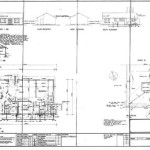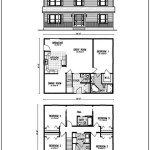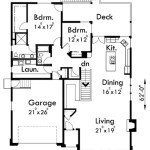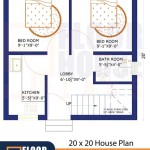How To Draw Up House Plans
Whether you are a professional architect or a homeowner planning a renovation, understanding how to draw up house plans is essential. House plans are detailed representations of a building's design, including floor plans, elevations, and sections. They provide a visual representation of the building's layout, dimensions, and materials used.
Creating house plans requires a combination of technical skills and creativity. Here is a step-by-step guide to help you draw up house plans:
1. Determine the Purpose and Scope
Before starting, it's important to define the purpose and scope of your house plans. Are you designing a new home, renovating an existing one, or adding an extension? This will help you determine the level of detail and complexity required.
2. Gather Information
Next, gather all relevant information about the project. This includes site measurements, zoning regulations, and any specific requirements or preferences you may have. It's also helpful to visit the site and take photographs to capture the existing conditions.
3. Sketch the Floor Plan
Begin by sketching out the floor plan, which shows the layout of the rooms and their dimensions. Use a scale to ensure accuracy and create a clear representation of the space. Consider the flow of traffic, placement of windows and doors, and the relationship between different rooms.
4. Draw the Elevations
Elevations are vertical views of the building's exterior. Draw the front, back, and side elevations, ensuring they accurately reflect the design and materials used. Include details such as windows, doors, and any architectural features.
5. Create Building Sections
Building sections provide a cross-sectional view of the house, showing the height and depth of the structure. They are essential for detailing construction elements such as walls, floors, and roof framing. Create sections through critical areas of the house to illustrate the design.
6. Add Annotations and Details
Once the basic house plans are complete, add annotations and details to provide additional information. Include notes on materials, finishes, fixtures, and any other relevant specifications. This will help contractors and builders understand the design intent.
7. Use Software or Hire a Professional
While it's possible to draw up house plans manually, using software can streamline the process and produce more accurate and detailed results. There are various computer-aided design (CAD) programs available that specialize in architectural drafting.
If you lack drafting experience or require complex plans, consider hiring a professional architect. They have the expertise and knowledge to ensure your plans meet building codes and regulations.
Conclusion
Drawing up house plans is a meticulous process that requires careful planning, technical skills, and attention to detail. By following the steps outlined above, homeowners and architects can create clear and comprehensive plans that effectively communicate the design and construction intent.
Remember to consult local building codes and regulations to ensure your plans comply with legal requirements. With proper planning and execution, you can create house plans that transform your design vision into reality.

Floor Plan Creator And Designer Free Easy App

House Plans How To Design Your Home Plan

House Plans How To Design Your Home Plan

Make Your Own Blueprint How To Draw Floor Plans

Make Your Own Blueprint How To Draw Floor Plans

House Plans How To Design Your Home Plan

Make Your Own Blueprint How To Draw Floor Plans

How To Draw House Plans On Your Pc 5 Simple Steps

How To Draw Blueprints For A House With S Wikihow Drawing Plans Plan

Floor Plans Learn How To Design And Plan








